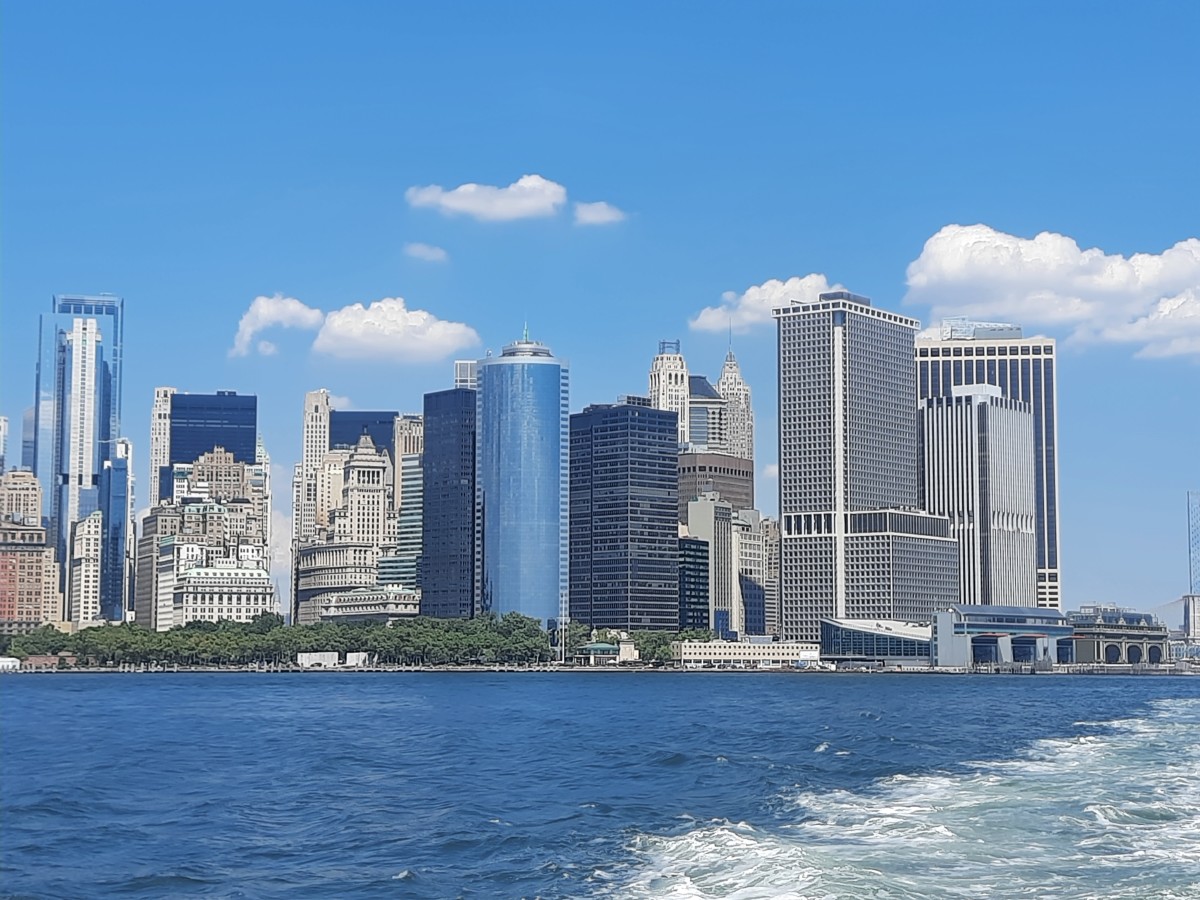- HubPages»
- Travel and Places»
- Visiting North America»
- United States»
- New York
Thor or Bloomberg: Which Development Plan Will Be The One That Destroys Coney Island?
Right now real estate mogul self proclaimed developer Joseph J Sitt and businessman and New York mayor Michael R Bloomberg are at war with each other over the future of Coney Island. They both agree that Coney Island must be replaced with something else. The disagreement is on how exactly to destroy it. And yet both men are promoting plans where they claim their competing plans will expand the historic amusement area and bring in much needed development along with the creation of thousands of local jobs. On close examination both neither plan delivers any of these promises. What is confusing to the uninformed is why Bloomberg and Sitt are fighting when both their plans are identical.
Both plans call for luxury high rise condos, hotels, a water park, an urban shopping district, and an entertainment district that may or may not have any rides as those would be built last. The difference in the plans is where the condos will go. Bloomberg had let developers know that the condos would be limited to the West side of Coney Island and entertainment to the East side. But Sitt wants condos on the East side as well. Sit has argued that amusements and entertainment can be built indoors, and as long as they are going to be in a building then he should be allowed to build condos on the upper floors. This is a lot different than the plans Sitt had initially given the city five years ago when he said he only wanted to build an amusement resort. That was back when Sitt and Bloomberg were still working together in a backdoor deal to redevelop the amusement area.
ENTER THOR
Shortly after taking office Bloomberg formed the Coney Island Development Corporation, a think tank that on the surface was created to come up with a comprehensive plan to revitalize the crumbling amusement area but in all actuality was suppose to lure developers in to redevelop the entire amusement area. On the table was property the city owned and currently being used for parking, the lot next to the new Keyspan Stadium and the other lot next to the New York Aquarium. The idea was to rezone to allow hotels or condos and sell the property to developers. Initial plans included downsizing the amusement area to a small park at the end of the Steeplechase pier next to the now abandoned Parachute Jump. The core amusement area was to be replaced with hotels, restaurants, and an outdoor market. The buildings along Surf Avenue would be torn down and replaced with studio apartments built above ground floor retail. Somewhere along the way the Coney Island Development Corporation decided this was a bad idea. If they wanted to get away with selling off city parks to developers then they would need to preserve and even develop the core amusement area, those 12 acres between Stillwell Avenue and the Cyclone where the rides were still active. The other half of the amusement area was no more than vacant lots, a result of rides that were torn down in the early 80's in preparation of casino gambling in Coney being legalized. What the city wanted now was condos West of Keyspan Stadium, a 224 room hotel and market between the stadium and Stillwell, and a new modern amusement park on the East side of Stillwell.
What was needed now was a developer. And first to volunteer was Joseph Sitt. Joe Sitt was the president and founder of Thor Equities, a real estate company that specialized in buying an managing hotels. Sitt had just dazzled the city with grand plans to redevelop the run down Albee Square Mall as well as many other projects around the city. Sitt was let in on a few secrets such as the rezoning plan and that the city was just about to size land owned by Horace Bullard for failure to pay taxes. Using this information Sitt approached Bullard and offered him $13 million for property he owned on the western side of the amusement area which Bullard then used to pay off his back taxes on his remaining. Sitt never told Bullard about the impending rezoning. When the city released it's plans to rezone the Western area as residential Sitt sold the property to condo developers Taconic for $90 million. No one in the city ever said they were upset about Sitt going behind their backs to buy and flip Bullard's property and ruin their plans to take it for themselves. But I imagine they were.
Sitt used some of his new $90 windfall to buy property from another land owner Herman Singer. Two lots, one the former site of Stauch's bath house and Bobsled coaster, the other the former site of the Tornado coaster, all torn down in the 80's to make way for the casinos that never came. Now based on the fact that he owned 9 acres in the amusement area Sitt made a bid to the city to be the developer for Coney Island's Eastern area. What Sitt proposed to build was not an amusement park but a resort hotel that would have taken up the entire Eastern amusement area to be called "The Boardwalk"


Sitt promised that the resort would include a water park and would allow for an indoor amusement mall. The city said it loved Sitt's plans and for a while it looked as if "The Boardwalk" resort would be the one the city went with. Other property owners worried that if the city officially endorsed Sitt's resort that they would use eminent domain to take the rest of the property Sitt needed to build it. Early on when the mayor announced his ambitions to redevelop Coney Island city officials were careful to say that they "Did not want to use eminent domain". Pay close attention. They did not say "Would not use eminent domain" or "will never use eminent domain" but said "Did not want to use.....". which was a veiled threat. Such as a bank robber saying "I don't want to have to shoot anyone". Representatives from Thor Equities approached the other property owners telling them that if they sold their property now then they would be willing to make a deal to include them in the new resort. Yet another veiled threat that if they did not sell now then they would be forced to sell later. The next to sell was Nathans who gave up a city block worth of property for the agreement that Nathan's would be allowed to be part of the new resort. Other property owners also sold their land to Thor. word started leaking out that Joe Sitt was not really going to build a hotel but was about to ask the city for residential zoning so they could build condos with ground floor amusements. Thor denied this claiming that since the property East of Keyspan Stadium was not zoned for residential they could not possibly build condos. All Thor wanted to do is build a multi million dollar amusement resort with Vegas glitz.
EXPOSED
While Sitt was telling the city and the media he wanted to build an amusement resort, he was telling his investors at Thor Equities a different story. Thor hired the architect firm EE&K to design condos on the property they had so far. EE&K put the renderings on their website by mistake and immediately took them down. But by that evening they renderings were in all the blogs.
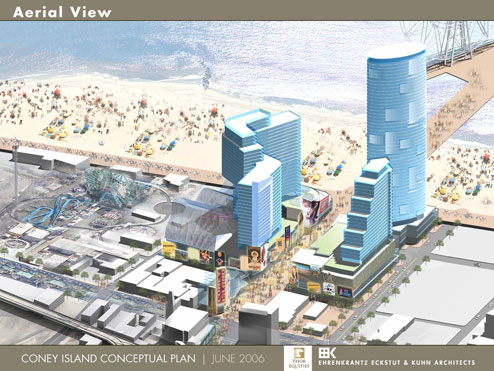
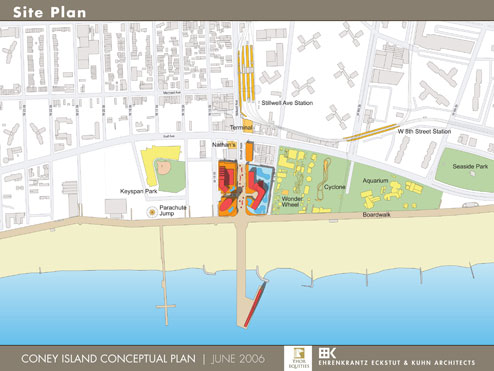
A Thor spokesperson said that the plans did not represent what Sitt wanted to build and EE&K had made the renderings without Thor's consent. But now with the cat out of the bag Sitt began to admit that his resort would include "some condos" and would not be the single building shown in his original "The Boardwalk" rendering. There would be at least four buildings in his resort, one for sopping, two for condos, and one for a hotel with time shares. Thor released a bunch of renderings showing how the new multi buildings resort was just as exciting as an amusement park once you dressed up the outside of the building




GIVING SITT AND OTHERS A HINT
while no development strategy had been finalized yet the Coney Island Development Corporation released many renderings and a map showing where and what they wanted built.
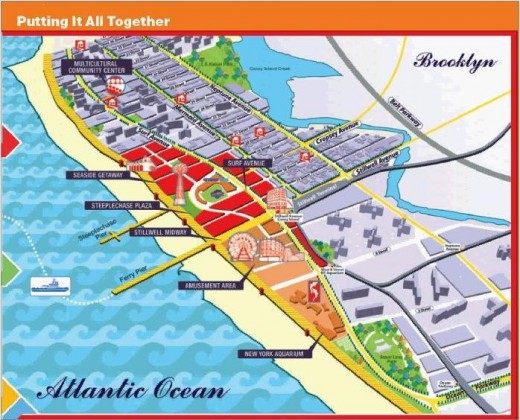





This let Sitt and others know that they were not considering allowing any residential or major development in the amusement area. But Sitt could not take the hint and a year later insisted the mayor had told everyone that residential development would be allowed in Coney Island East.
ALBEE SQUARE
Things were not going smooth down at Albee Square, a city owned mall that Thor Equities leased. They had bought the lease from Forest Ratner a couple of years earlier for $25 Million. Soon after Sitt told the city of his plans to redevelop the mall into a multi storied showplace with golden fixtures, an Italian style plaza, a multiplex theater, and he had several major retail stores lining up to lease space. The city agreed and Sitt countered saying he would need to build a mix use condo and office skyscraper above the mall to pay for the new mall's construction.
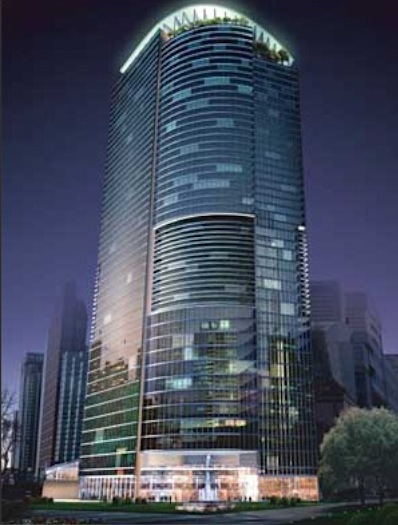
He also requested the lease be changed so that it included an option by the lease holder to buy the property for $5 Million. Excited about the new mall Thor equities promised to build the city gave Sitt the rezoning and lease he had asked for. For the next two years there was no attempt at construction, and then suddenly Thor announced they had sold the property including it's zoning changes for $125 million to Arcadia who wanted to build a mix use skyscraper without a mall below. This drew attention to Sitt's real track record developer. He had a habit of buying property, announcing he wanted it rezoned for another project, dazzling the city with renderings of what he wanted to build, then once getting the desired zoning change flipping the property to a different developer for five times what he paid for it. Out of dozens of projects that Thor equities had said they wanted to develop non had materialized while in nearly every case where rezoning was approved Thor flipped the property almost immediately after. Albee Square was an embarrassment for Bloomberg who had promised in a press conference that the new mall would create thousands of jobs and bring money to downtown Brooklyn. Now suddenly he had to explain how a real estate mogul with no track record of developing anything was able to trick him.
THOR GETS ASTROLAND
In the meantime the city had made a big mistake. Worried that if they did not come up with a plan to redevelop their own property the city would take it away from them and give it to Thor Equities both Deno's Wonder Wheel Park and Astroland submitted their own plans. Denos planned a seaside hotel that would wrap around the Wonder Wheel allowing it to protrude from the roof. Astroland submitted their own plans of a glass enclosed structure that would allow the park to continue operating during the cold winter months. At a meeting with city officials both parks were told that their plans were unacceptable and that the city had already found the developer they wanted and were interested in acquiring Astroland and Denos for that developer. Both Denos and Astroland assumed the city was talking about Sitt. A year earlier Sitt had offered Astroland $45 million for their property. The city was now offering $3 million. The family that owned the park panicked. They contacted Thor who informed them that now the offer was $30 million and each week they waited the offer would be less. A vote was taken and it was decided to sell the property instead of waiting for eminent domain. Thor agreed to allow Astroland to continue leasing the property until construction of the new resort was ready to begin. Denos also almost sold their property but the family that owned that park was split even between those who wanted to sell and those who wanted to stay. Another spooked land owner was the Ward family who leased the land that half of Denos operated on. They took Thor's offer of $11 million but gave Denos a year to match the offer. Denos was not able to raise the money. Now with Astroland in their possession Thor announced they had just hired the amusement firm of Think & Well to design a new park for the Astroland site to be called "Coney Park"


City officials were not thrilled to see in the plans that Thor assumed they could just build one of their coasters through the landmarked boardwalk. They insisted that Sitt submit plans that did not involve residential buildings. This would prevent Sitt from flipping the property to condo developers without ever building any of the promised amusements. By the spring of 2007 actions taken by Thor Equities had generated protests. When Sitt first began promoting his resort he promised that no local businesses would be forced out and even that he was going to invite them to continue operating on his resort once built. However less than a year later Thor Equities began evicting all businesses from their property. An entire amusement park along Stillwell, two motels, a restaurant, a snack bar, an arcade, a dance club, a spa, several games, and a mini golf. It was also uncovered in the press that the businesses that remained were all forced to sign confidentiality clauses that forbade them from publicly saying anything against Thor Equities or the proposed resort until three years after it was completed. A growing number of concerned citizens began to believe that Sitt never intended to build any amusements and began protesting his resort on the steps of city hall. With this bad publicity Sitt held a public community meeting where he revealed new renderings of the amusement resort he said he wanted to build.



Claiming that he was no longer building any condos he instead insisted on building four tower hotels that would be able to sell time shares, which meant the buildings would be zoned as residential to allow the time shares. In trade of this Thor would build an amusement park on the Astroland site. They would also require $100 million in public subsidies. Bloomberg knew what a condo disguised as a luxury hotel looked like. Economically four hotels made no sense. The best estimates for the area called for no more than a 224 room hotel, while each one of Thor's luxury hotels would be in towers with 700 rooms.
THE WAR BEGINS
Bloomberg decided he could not trust Thor Equities and Joe Sitt. He knew thanks to Sitt's promises that everyone was now expecting multimillion dollar amusements and if instead Sitt turned Coney Island into a private condo village it would be the mayors office and not Sitt who would take the blame. Already critics were holding Bloomberg and city hall responsible for Albee Square. He instructed the Coney Island Development Corporation to start talks with Tivoli, a European amusement park company that expressed interest in developing and operating the amusement area. The meetings were deliberately leaked to the press. He then offered Joe Sitt a trade of his property for the city's Western amusement zone property which would be rezoned for condos. Sitt turned the offer down. His spokesperson threatened that if the mayor did not go along with any of his plans 100% then he would mothball the project until a mayor was in office who would back his plans.
Both the city and Thor Equities were now fully at war with each other both inside and outside the press. Thor had promised to sell the city two historic buildings along Surf Avenue that were to become part of the Coney Island museum but withdrew the offer and announced they were going to tear the buildings down. They refused to give Astroland a lease for 2008 unless the city immediately rezoned their property to allow residential towers. In the press an unidentified city official told a reporter that Joe Sitt's plans for a resort were dead in the water which became the headline of a newspaper article. Sitt continued to claim that his interests was expanding the amusement area and to prove that he was not the villain claimed that he had evicted the amusement park and mini golf on Stillwell because he had big plans for those lots. what they turned out to be was a giant inflatable slide which was set up for a promotion by Hippo and a traveling circus that set up tents for a few days in late July. In September of 2007 Thor refused any 2008 leases for any amusements operating on property they owned. A small amusement park was forced to close and sell off their rides. Astroland also was not offered a 2008 lease and over the Labor Day weekend officially closed it's park forever. Bloomberg announced that in November he would be releasing his final plan for the rezoning and development of Coney Island. Still claiming they were pro amusement Thor made an act of good faith and offered Astroland a 2008 lease. That November Bloomberg released his plans which called for no residential buildings West of the stadium, Hotels only along Surf, and a 15 acre amusement park next to the beach. The city would then move park land designation away from the baseball stadium parking lot and on the new 15 acre amusement park allowing them to rezone and sell the former park to Taconic to build condos.

Now realizing any hope with Bloomberg making him Coney Island's developer was gone Sitt turned to other politicians that he was either friends with or had in his pocket. State Senator Carl Kruger, State Senator Diane Savino, State Assemblyman Alec Brook-Krasney, and Councilman Domenic Recchia. All had previously said that they would back the Development Corporations final plan, but now suddenly did an about face. While together they could not force the city to accept Sitt's plans they could put a stop to Bloomberg's plans long enough for Anthony Wiener to become the next mayor. Wiener was a close friend of Sitt and while he never said publicly if he backed Sitt's plans it was believed that once he took office he would give Sitt everything he asked for. Bloomberg backed down and suggested the two men come up with a compromise plan.
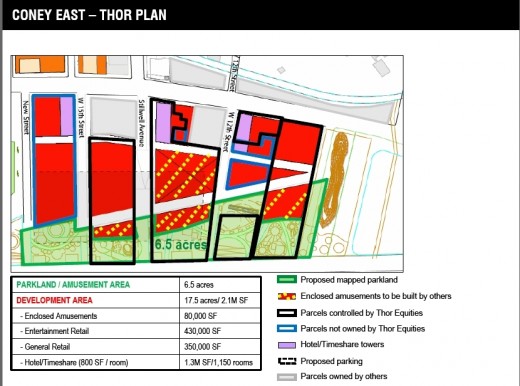
The compromise that Thor submitted was that the city turn over to him 4 acres of property they did not already own, presumably through eminent domain. Thor would be allowed to build three residential buildings they were still claiming were "time share hotels". Where tall buildings were not allowed they wanted to build ground floor box store retail with top floor residential. About three acres of those box stores would be reserved for amusements, but others would have to pay for them and build them. Should no amusement operators be able to afford Thor's rent then they wanted the option to lease the same space to non-amusement retail. In return Thor would instruct his political friends to allow 6 acres in the amusement area to take parkland designation from the parking lot. But Thor would continue to own and control what was built on the parkland they owned. The city would also have to turn over at least a half acre of the parkland for a parking lot. Another concession Thor made was that they would not ask for the properties owned by Nathan's, the Coney Island Museum, and the site that the Wonder Wheel sat on. They considered this a compromise because they were no longer asking for the entire amusement zone to build their resort and had reduced the towers they were asking for down to three. Bloomberg saw that Thor's idea of a compromise was to demand even more than what they had demanded that past summer. He submitted his own compromise plan.
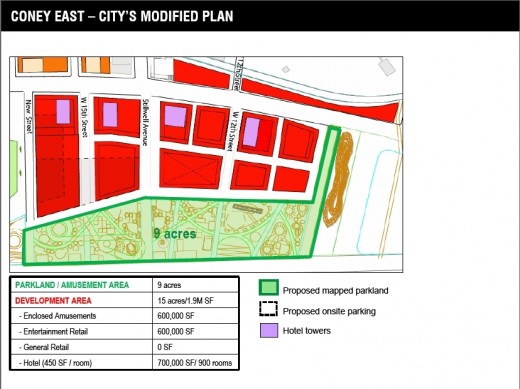
No eminent domain for Thor. Four sites zoned for towers, two off of Thor's property, that would be used for hotels only. 15 acres of rides reduced to 9 acres. 600, 000 square feet of retail would be allowed, but restricted to entertainment retail and not for regular box retail. Sitt found this compromise unacceptable. The local amusement community also found it unacceptable. They had stood on the sidelines watching as Thor bought up and vacated amusement land and as the city threatened to take their property for other developers. They had reluctantly backed the city's original 15 acre plan even though it meant reducing the amusement area from it's current 67 acres because they felt it was the lesser of two evils. Now the city was suggesting reducing them to 15 acres, much of which would not be used for amusements, and tearing down Nathans to be replaced by a hotel. Calling it a compromise of a compromise of a compromise they now were against both Thor and Bloomberg's plan. Adding to their concerns was the firm Arquitectonica who released plans they said the city had asked them to make of the 15 acre plan that only contained 7 acres of amusements.
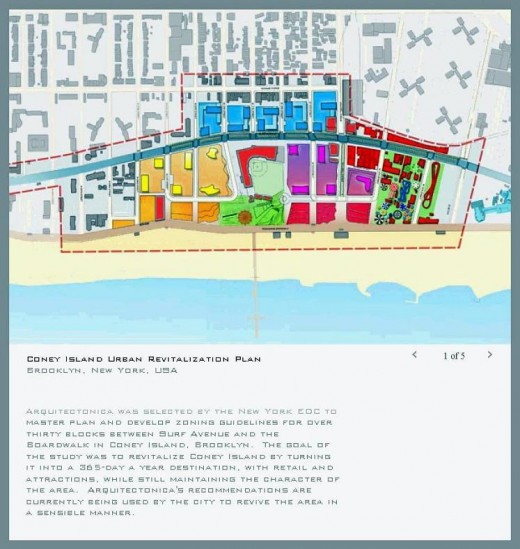
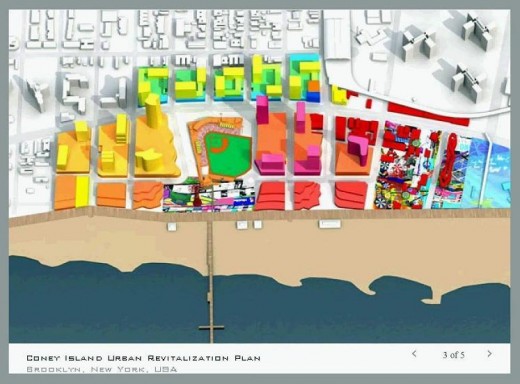
Realizing that both Bloomberg and Sitt were paying lip service to the public about wanting to build amusements just so they cold get their plans passed and had no real interest in preserving Coney island. Sitt saw it as an opportunity to make a fortune by acquiring land when it was zoned only for amusements then raising it's value 10 times once it was rezoned for condos and retail. Bloomberg saw the new zoning as an opportunity to sell off city park land by moving it's designation onto someone else's private property. And they continued to pay lip service for the next two years claiming that each had a plan to bring major amusements to Coney Island and the other did not. In 2008 Thor Equities launched a media campaign called "The Summer Of Hope" where they said that they were bringing an amusement park and other attractions. What did show up was a traveling carnival that stayed on Thor's lot for one month then left early when they did not get along with Sitt. 2009 has so far been an equal disaster. Promising once again to bring amusements to Coney they once again scrambled at the last minute to find a carnival willing to leas their property. In addition Thor had refused to offer Astroland a 2009 lease forcing it to close forever and leaving their lot vacant as well. Now Thor had 11 acres to fill and had publicly promised to fill it. They nearly cut a break when Ringling Brothers offered to set up a circus on Thor's property for the summer, but withdrew the offer when they said that Sitt was making unreasonable demands such as refusing Ringling the right to operate refreshment and souvenir concessions in their tents. Ringling turned to the city who provided them with an empty lot owned by Taconic. After this embarrassment Thor announced that they had plans to use 100% of their property and would be operating a seaside fair that would not close early be open through Christmas. But by opening day in April Thor still had nothing on their property. They desperately put adds in the amusement trade papers asking for operators of the same rides that the had just evicted in the past few years but got no replies. Finally they were forced to hire a traveling freak show run by Johnny Strong and negotiate with the same traveling carnival that had pulled out of their property the summer earlier. This only filled 30% of his property. The rest he decided to fill with a flea market. Since flea markets were not legal on amusement zoned property he claimed it was a summer fair and hired a few performers to entertain on a makeshift stage. The "Festival by the Sea" got off to a bad start when the tents Thor put up did not comply with safety codes. The festival was forced to be held outdoors while new tents were acquired which revealed that only a handful of vendors had signed up for the festival leaving the bulk of the lot vacant. It still remains to be seen if the carnival and side show will stay for the rest of the summer and if the so called festival will remain open until Christmas. Meanwhile Bloomberg is pushing through his rezoning plan. But it will meet strict opposition by Sitt and his political friends. Last spring after one of Sitt's representatives met with the Coney island community board who in turn voted amendments to Bloomberg's plan that favored Thor Equities including a ban on using eminent domain against Thor and allowing box retail in the amusement zone. Around the same time Bloomberg opened negotiations between the city and Sitt to buy his property. The city offered $110 million which was roughly just above what Sitt had paid for it. Sitt claimed he had an extra $45 million expenses since buying the property and demanded $160 million for his property. The city dropped it's offer to $105 million saying that would be their final offer.
- Why Neither Bloomberg or Sitt's Coney Island Redevelopment plans Will Create Any Amusements
JOE SITT'S ORIGINAL PLANA $1.5 billion resort that would have brand new amusements, a water park, a hotel, retail shopping, and condos. The condos would be used to finance the entertainment and...







